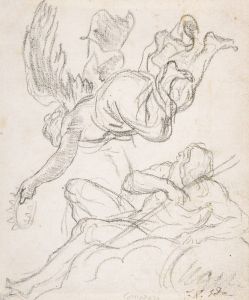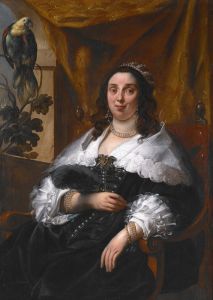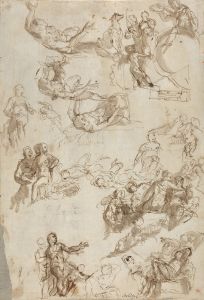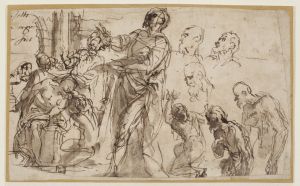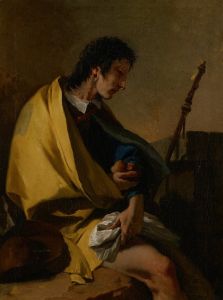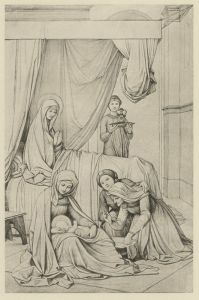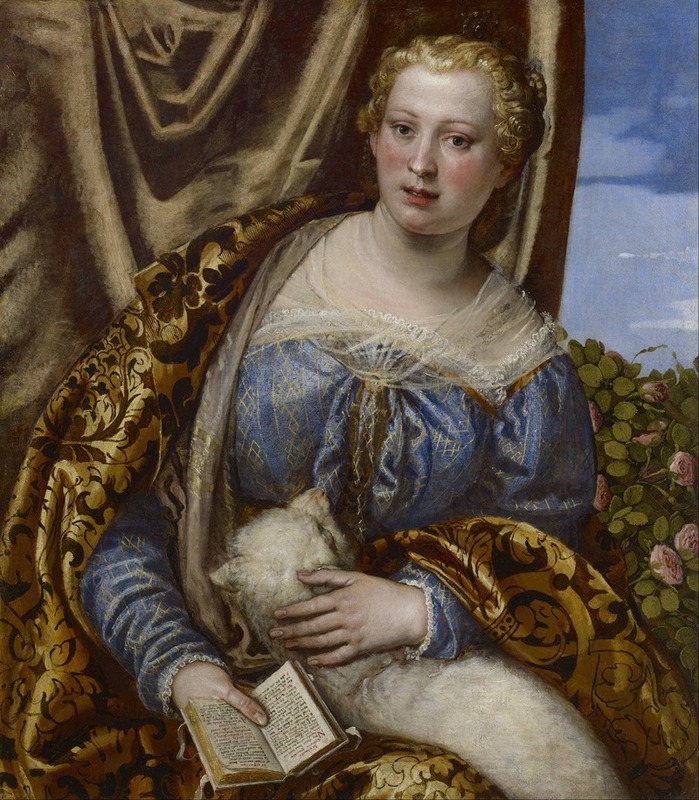
Portrait Of A Lady As Saint Agnes
A hand-painted replica of Paolo Veronese’s masterpiece Portrait Of A Lady As Saint Agnes, meticulously crafted by professional artists to capture the true essence of the original. Each piece is created with museum-quality canvas and rare mineral pigments, carefully painted by experienced artists with delicate brushstrokes and rich, layered colors to perfectly recreate the texture of the original artwork. Unlike machine-printed reproductions, this hand-painted version brings the painting to life, infused with the artist’s emotions and skill in every stroke. Whether for personal collection or home decoration, it instantly elevates the artistic atmosphere of any space.
"Portrait of a Lady as Saint Agnes" is a painting by the renowned Italian Renaissance artist Paolo Veronese (1528–1588). Veronese, whose real name was Paolo Caliari, was a prominent figure of the Venetian school, celebrated for his use of vibrant color, intricate compositions, and depictions of opulent settings. This particular work is an example of his skill in blending portraiture with religious iconography, a practice that was not uncommon during the Renaissance period.
The painting portrays a young woman dressed as Saint Agnes, a Christian martyr and saint who is traditionally associated with purity and chastity. Saint Agnes is often depicted with a lamb, a symbol of her innocence and her name's connection to the Latin word "agnus," meaning lamb. In this work, the woman is shown holding or accompanied by a lamb, which reinforces the association with the saint. The subject's attire and demeanor suggest a blend of idealized sanctity and the elegance typical of Veronese's portraits.
"Portrait of a Lady as Saint Agnes" exemplifies Veronese's mastery of color and texture, as well as his ability to convey both the individuality of the sitter and the symbolic attributes of the saint. The painting reflects the Renaissance interest in combining secular and sacred themes, often commissioning portraits that incorporated religious elements to emphasize the piety or virtue of the subject.
The exact identity of the woman depicted in the painting is not definitively known, as is often the case with such works. It is possible that she was a member of the Venetian nobility or a patron of Veronese, but no conclusive evidence exists to confirm this. The painting's date of creation is also not precisely documented, though it is generally attributed to Veronese's mature period, when he was at the height of his artistic powers.
Today, "Portrait of a Lady as Saint Agnes" is housed in the Kunsthistorisches Museum in Vienna, Austria. It remains an important example of Veronese's ability to merge portraiture with allegorical and religious themes, showcasing his technical skill and the cultural context of 16th-century Venice. The painting continues to be studied and admired for its artistic and historical significance.





